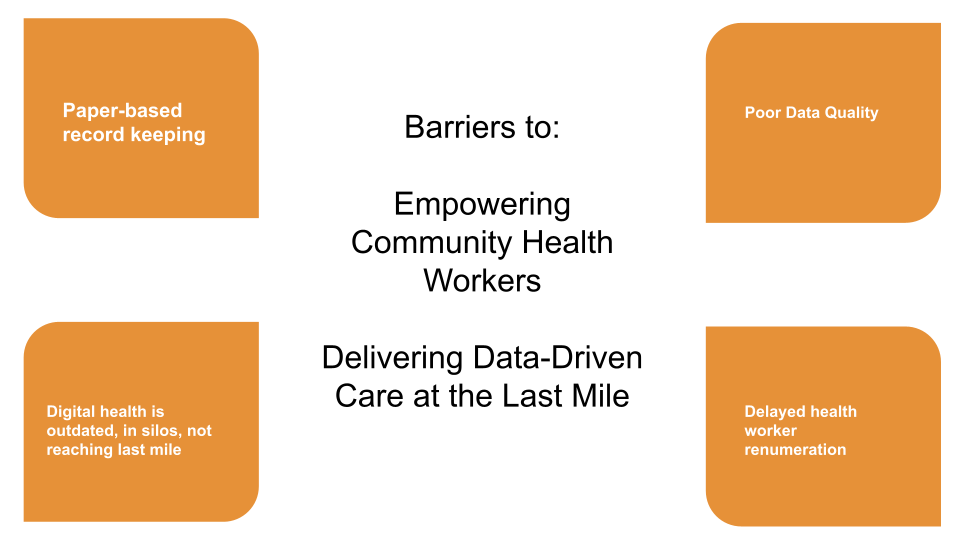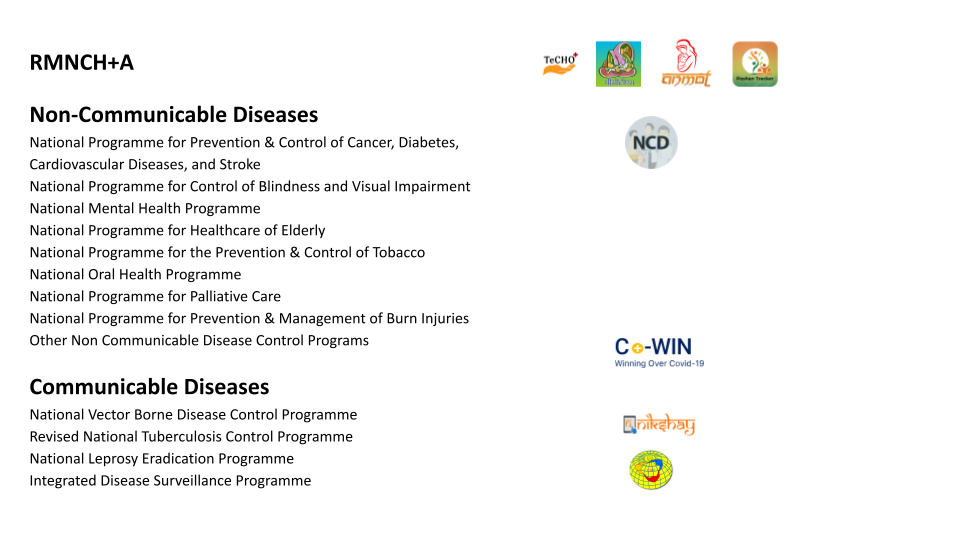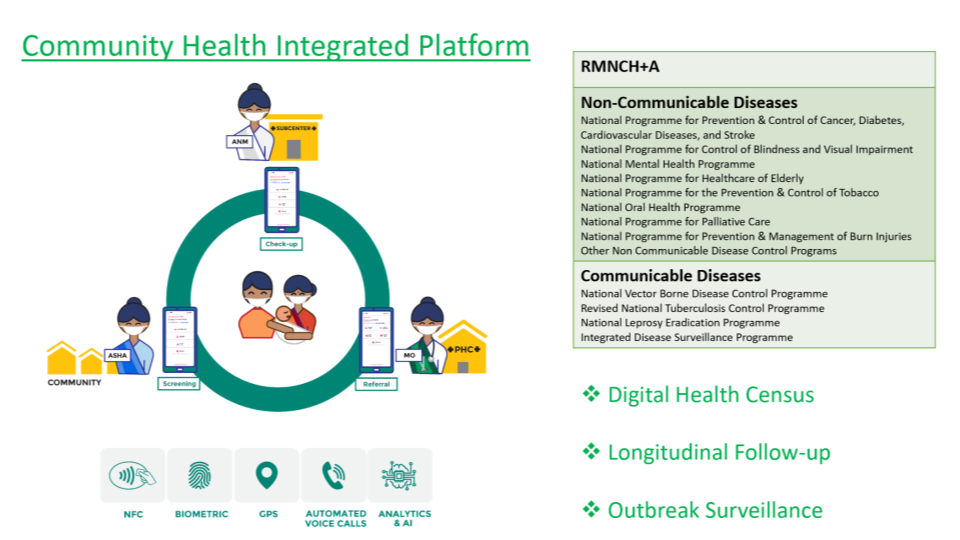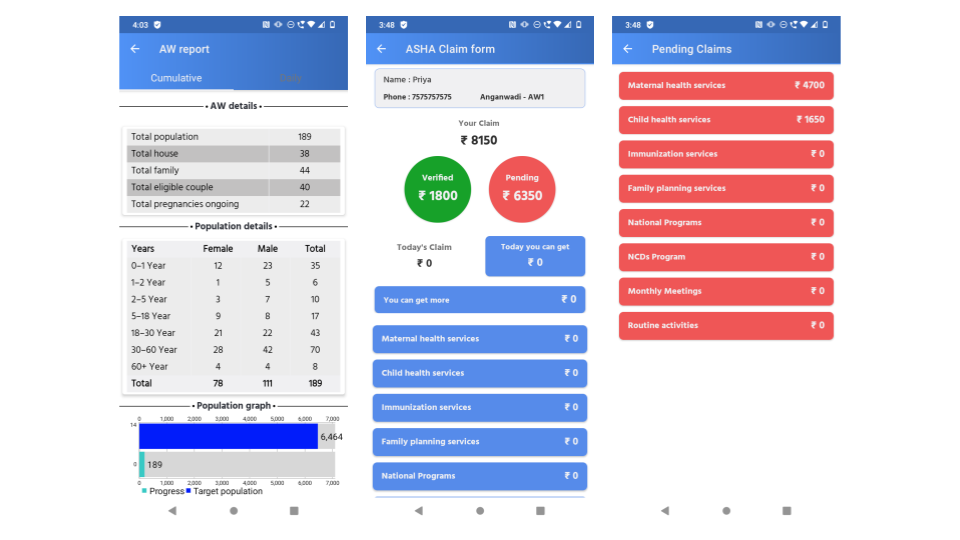
India’s public health system boasts the world’s largest decentralized community health workforce, under the National Health Mission. To improve on health care delivery, the MoHFW is taking an important step away from paper-based tracking methods to realizing a National Digital Health Mission. Through this effort, health delivery can be tracked in a manner more accountable, efficient, and impactful.

The current ecosystem of digital solutions reflects the siloization of vertical health programs. Different applications and backends exist for RMNCH+A, NCDs, TB, and COVID-19 for example. Some applications have been adopted uniformly, while others have fragmented, state-specific avatars which attempt to connect to the respective central government backends through application programming interfaces.



Khushi Baby looks to address the above challenges with CHIP (“Community Health Integrated Platform”), a digital public health good, developed over the last 7 years, which is currently being scaled across Rajasthan, India’s largest state, in phases.
CHIP includes offline-ready, m-health applications for the three key health workers of the Indian public health system: the ASHA (community health worker), the ANM (nurse, who visits community once a month for preventative check-ups), and the Medical Officer (who cares for high-risk patients).
These mobile applications capture the entire work requirement of each respective health worker, across all primary health care programs. This streamlines data collection, report generation, and payment automation. These mobile applications are also inter-linked, allowing sharing of longitudinal beneficiary data for informed care.
Using the platform, health workers will be enabled to perform the following core activities from their smartphone:
1. Performing a digital health census (to capture true population denominator and community health need)
2. Longitudinal follow-up of primary health care across program verticals (e.g. family planning, maternal and child health, non-communicable diseases, tuberculosis)
3. Disease outbreak surveillance for COVID-19 and other emerging infectious diseases (including symptom- screenings, referrals, and vaccination follow-up)
This platform also digitally empowers health officials with AI and GIS-based dashboards to:
1. Monitor and respond to community needs in real time
2. Monitor and respond to healthcare performance in real-time
3. Automate personalized community engagement to health workers and beneficiaries via dialect specific voice calls / messages
Meanwhile, the backend system can be leveraged to update MOHFW databases and automate payments to ASHAs"

USPs

In 2020, the Central Ministry of Medical, Health and Family Welfare granted 17.55 Cr INR ($2.2M) for the project launch under the National Health Mission Innovation budget for Rajasthan. In 2022, the MOHFW provided a second round of funding - 107.5 Cr INR ($13.5M) to scale CHIP across Rajasthan , and ultimately to demonstrate a digital health model for scale-up across India. In that regard, Khushi Baby is also working to integrate CHIP with the Ayushman Bharat Digital Health Mission to develop a model for interoperable community health level data relevant for about 1 billion Indians living in rural India today.
